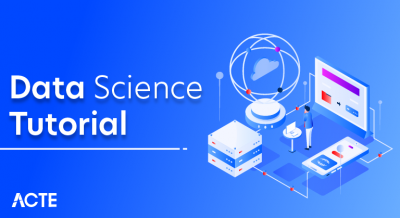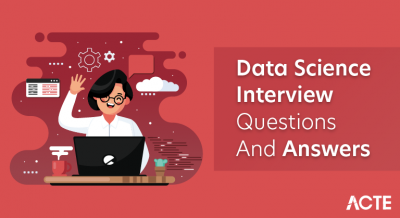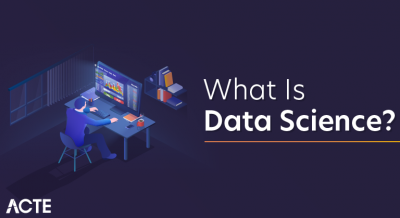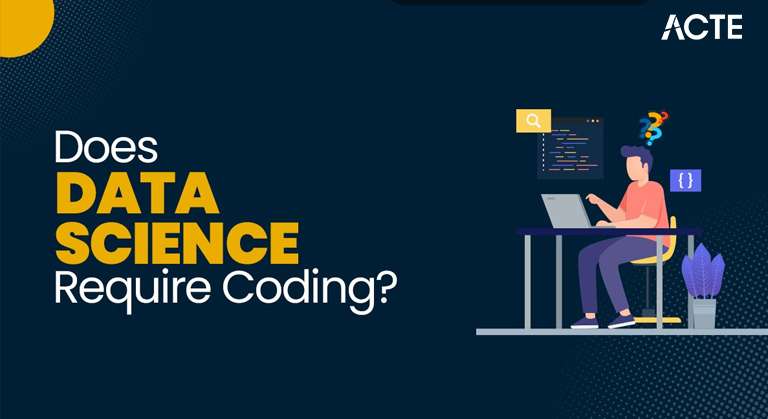
- Introduction to Coding in Data Science
- Importance of Programming for Data Science
- Popular Programming Languages for Data Science
- Python vs. R for Data Science
- Role of SQL in Data Science
- No-Code and Low-Code Data Science Tools
- Data Science Without Coding—Is It Possible?
- Essential Coding Skills for Data Scientists
- Machine Learning and Coding
- Data Science Libraries and Frameworks
- How to Learn Coding for Data Science
- Conclusion and Final Thoughts
Introduction to Coding in Data Science
Coding is fundamental to converting raw data into meaningful insights within the field of data science. Through programming, data scientists collect, process, analyze, and visualize information, as well as develop machine learning models that support data-driven decisions. For those aspiring to enter this field, Data Science Training is essential it equips professionals with the skills needed to manage large datasets, automate processes, and build predictive algorithms.
Importance of Programming for Data Science
Programming is a fundamental skill for data scientists because
- Data Manipulation and Cleaning: A significant portion of data science involves preparing data for analysis, often requiring cleaning, transforming, and reshaping the data. Programming allows for the automation of these tasks, saving time and reducing human error.
- Building Models: Data scientists use coding to build machine learning models, which are used for tasks such as classification, regression, and clustering. Writing code allows them to select appropriate algorithms, fine-tune them, and validate their results.
- Automating Repetitive Tasks: In the Basics of Data Science, automation plays a key role tasks like data collection, processing, and visualization can be streamlined using scripts. This allows data scientists to dedicate more time to complex analysis and strategic problem-solving.
- Handling Big Data: With large datasets, manual analysis becomes infeasible. Coding allows for the efficient processing and analysis of big data using specialized libraries and frameworks.
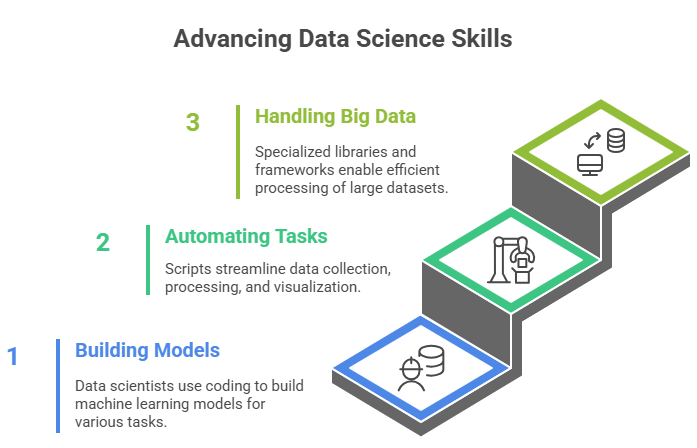
Popular Programming Languages for Data Science
Several programming languages are commonly used in data science, each with its strengths and specific use cases:
- Python: Python is one of the most popular languages for data science due to its simplicity, readability, and extensive ecosystem of libraries (such as Pandas, NumPy, matplotlib, and Scikit-learn) for data manipulation, analysis, and machine learning.
- R: R is a statistical programming language widely used in academia and research for statistical analysis, data visualization, and reporting. It offers rich statistical modeling and hypothesis testing functionality with libraries like ggplot2 and dplyr.
- SQL: SQL (Structured Query Language) is essential for working with relational databases. Data scientists use SQL to query databases, extract relevant data, and perform operations like filtering, joining, and aggregating data.
- Java and Scala: These are commonly used in big data processing frameworks like Apache Hadoop and Apache Spark, where performance and scalability are critical.
- Julia is a newer language that is gaining traction in data science due to its high performance, particularly for numerical and scientific computing tasks.
Python vs. R for Data Science
-
Python:
- Strengths: Versatile and beginner-friendly, Python is ideal for general-purpose programming and has a strong community for data science applications. Python is used for everything from data cleaning to machine learning and deep learning. Its broad library support makes it highly flexible.
- Popular Libraries: Pandas (data manipulation), NumPy (numerical computing), Matplotlib (visualization), Scikit-learn (machine learning), TensorFlow, and PyTorch (deep learning).
- Use Cases: Web development, automation, machine learning, and scientific computing. R:
- Strengths: R is optimized for statistical analysis and complex mathematical modeling. It excels in hypothesis testing, statistical modeling, and high-quality data visualizations.
- Popular Libraries: ggplot2 (visualization), dplyr (data manipulation), caret (machine learning), and Shiny (web applications).
- Use Cases: Statistical analysis, academic research, and data visualization. Comparison:
- Ease of Learning: Python is often considered more beginner-friendly due to its simple and intuitive syntax. Exploring a comparison like Python vs R vs SAS can help newcomers choose the best tool based on their learning preferences and project needs.
- Data Visualization: While both languages excel at data visualization, R’s ggplot2 is considered more powerful for creating complex and aesthetic visualizations.
- Machine Learning: Python has a slight edge over R in machine learning, as it is widely used in production environments and has robust frameworks like TensorFlow and PyTorch.
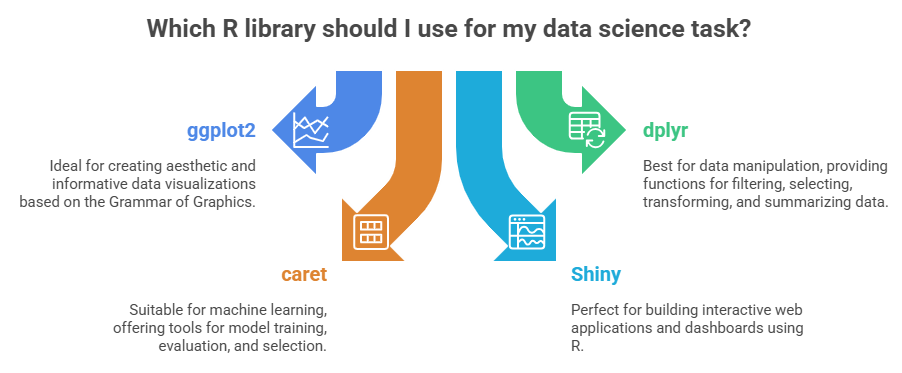
Role of SQL in Data Science
SQL (Structured Query Language) is essential for any data scientist with relational databases. SQL enables data scientists to:
- Retrieve Data: Write queries to select, filter, and aggregate data from large relational databases.
- Join Datasets: Combine multiple datasets using SQL joins (INNER JOIN, LEFT JOIN, etc.) to analyze complex relationships.
- Data Transformation: Perform operations like grouping, sorting, and applying functions to transform data into a usable format.
- Optimize Queries: SQL helps optimize queries for performance, especially when working with large datasets.
Despite being less involved in machine learning tasks, SQL is critical for data extraction, which is the first step in any data science project.
No-Code and Low-Code Data Science Tools
In recent years, no-code and low-code tools have emerged to support individuals with limited or no coding experience in performing data science tasks. While these platforms offer user-friendly interfaces for data manipulation, analysis, and even building machine learning models, having a foundational understanding through Data Science Training can significantly enhance their effective use. Examples include:
- Google AutoML: A platform that allows users to create machine learning models with minimal coding, focusing on automating the process of training and deploying models.
- Tableau: Primarily used for data visualization, Tableau offers drag-and-drop features to create interactive dashboards without writing code
- DataRobot: A machine learning platform that automates much of the model-building process, from data preprocessing to model selection and deployment. Alteryx: A tool for data preparation, blending, and analytics, offering drag-and-drop workflows and limited coding options. Pros of No-Code Tools:
- Faster implementation: Data analysis can be completed more quickly.
- Accessible to non-programmers: Great for business users who want to perform data science without extensive coding knowledge. Cons:
- Limited flexibility: You may not be able to customize models as much as you would with complete coding.
- Scalability issues: Large datasets or complex tasks might not be handled as efficiently.
Data Science Without Coding Is It Possible?
While there are many no-code and low-code tools available, coding still plays a central role in data science, especially for tasks like
- Advanced machine learning: Complex algorithms often require custom coding.
- Data preprocessing: Some tasks, like handling missing values or outliers, can be challenging with no-code tools.
- Scalability: As data grows in size and complexity, no-code tools may not handle the required volume or speed.
Thus, while basic data science tasks can be accomplished without coding, actual data science often requires programming for deep analysis, model building, and automation.
Essential Coding Skills for Data Scientists
- Python or R: Master one of these languages for data manipulation, analysis, and visualization.
- SQL: Learn how to query databases and manipulate large datasets effectively.
- Data Wrangling: Clean, reshape, and transform data using libraries like Pandas (Python) or dplyr (R).
- Machine Learning Algorithms: Understand how to implement machine learning models (e.g., linear regression, decision trees, clustering).
- Visualization: Present insights using visualization libraries (e.g., Matplotlib, Seaborn for Python, ggplot2 for R).
- Version Control: Learn Git to track code changes and collaborate.
Machine Learning and Coding
Machine learning relies heavily on programming. Some key aspects of coding in machine learning include:
- Data Preprocessing: Cleaning, scaling, and transforming the data into a format that machine learning algorithms can use.
- Model Selection: Writing code to select, train, and evaluate machine learning models using frameworks like Scikit-learn (Python), caret (R), TensorFlow, and PyTorch for deep learning.
- Hyperparameter Tuning: Writing code to experiment with different model parameters for optimization.
Data Science Libraries and Frameworks
Several libraries and frameworks make coding in data science more efficient:
- Pandas (Python): Essential for data manipulation and analysis.
- NumPy (Python): Provides support for large, multi-dimensional arrays and matrices and a collection of mathematical functions.
- Matplotlib & Seaborn (Python): Used for data visualization, helping scientists create charts and plots.
- Scikit-learn (Python): A library for machine learning that includes various algorithms for classification, regression, and clustering.
- TensorFlow & PyTorch (Python): Popular frameworks for building deep learning models.
How to Learn Coding for Data Science
- Choose Your Language: Start with Python or R, as they are the most widely used in data science.
- Online Courses: Platforms like Coursera, Udemy, and edX offer courses on Python, R, SQL, and machine learning.
- Practice: Reinforce your skills by applying what you’ve learned through Data Science Training on platforms like Kaggle, which offers real-world datasets and data science challenges to help you gain hands-on experience.
- Read Documentation: Familiarize yourself with library documentation (e.g., Pandas, Scikit-learn) to deepen your understanding.
- Work on Projects: Build data science projects to gain practical experience in coding, data analysis, and machine learning.
Conclusion and Final Thoughts
Coding is essential for data science, as it empowers professionals to manipulate data, build models, and automate tasks. Python and R are the most commonly used languages, with SQL playing a key role in working with databases. While no-code tools are helpful for quick tasks, coding remains central to advanced analysis and machine learning. By mastering programming skills, aspiring data scientists can gain a deeper understanding of data and unlock the potential for meaningful insights and innovations.


